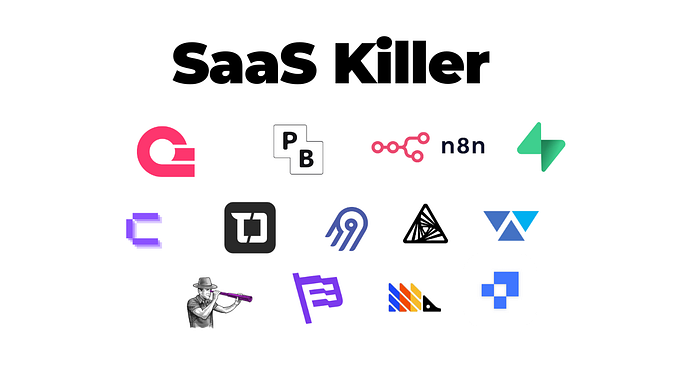What Fully Automated Dispatching and Routing Really Means

Efficient dispatching and routing are critical to the success of any mobility service. Traditional manual dispatching (think taxi service) requires a human dispatcher to receive ride requests and assign the trips to a driver/vehicle, typically to the nearest one available. As services scale, this model becomes increasingly unsustainable due to the limits on how many requests a human dispatcher can manage.
New mobility services like ride-hailing have eliminated human dispatchers. App-based ride requests are automatically sent to nearby drivers, and the first driver to accept the ride gets the booking. But peer-to-peer networks do not consider fleet efficiency. The providers don’t own their vehicles, so the dispatching and routing aren’t optimized around fleet-wide bookings as there is no need to maximize fleet utilization.
Traditional dispatching and route optimization software has been around for a long time, mostly for service and logistics fleets. These platforms typically create static plans, reconfigured each night, within fixed territories and require a good deal of manual work by dispatchers and drivers in the background. The platforms can’t expand as demand grows, and can’t adapt to real-time conditions such as traffic, or weather-related road closures.
New Level of Complexity
Fully automated, optimized dispatching, planning, and routing at scale for on-demand services requires the processing of millions of data points and making thousands of real-time decisions that would be impossible for even the most experienced human dispatcher or traditional software. This is especially true for shared on-demand services like microtransit, and in the future for shared autonomous services. The software needs to adjust and reoptimize in real-time as new bookings come in and as conditions like traffic, weather, and construction influence route availability. The number of variables to consider is staggering:
- The locations of all travelers and all vehicles
- The destinations of the travelers
- Conditions like traffic, weather, and construction that impact trip times
- Energy or fuel levels in vehicles
- Vehicle occupancy and capacity
- Where the vehicles can go after dropoff to serve a new ride as soon as possible
The challenge becomes even greater when rides are shared, and riders are pooled to combine overlapping rides. The opportunity is also clear: the ability to automatically and efficiently move more people with fewer vehicles, with predictable passenger and operator performance. This requires new levels of fleet orchestration.
Orchestrated Dispatching and Routing
Bestmile’s Fleet Orchestration Platform is designed to meet the challenge of automated dispatching at scale. It features high-performance algorithms that manage dispatching and routing in real-time and continuously react to incoming bookings and changing conditions. The platform automatically updates vehicle plans, matching and rematching bookings with the right vehicle while synchronizing with other transportation modes and communicating the optimized routes and timings to the vehicles. In doing so, Bestmile’s platform optimizes several performance metrics including:
- Vehicle movement distance (the distance to be driven by the vehicle to serve all planned rides, including deadheading)
- Ride time (the sum of the differences between the planned pickup time and dropoff time for all planned rides, weighted by the passenger load)
- Target time deviation (the sum of the absolute differences between the desired pickup time and the planned pickup time for all planned rides, weighted by the passenger load)
Bestmile conducted a simulation of a shared fleet using average daily taxi trip data from the city of Chicago and found that 200 shared vehicles can handle 90 percent of 31000 rides delivered by 2700 taxis. How is this possible? Read on to understand the four keys to on-demand fleet orchestration.
1. Sophisticated Optimization Technology
Making optimal matching and scheduling decisions has come to be known as the dial-a-ride problem (DARP) in the transportation industry. It refers to the challenge of meeting the most requests for rides with a minimal cost to the service provider. The challenge grows with the number of travelers and vehicles, as does the computational effort for the orchestration platform.
In practice, solving the DARP is highly dynamic, requiring frequent updates as new bookings come in, immediate responses to travelers, and scalability as new bookings impact previous and future dispatches for the entire fleet. The addition of pooling and prebooking enable better fleet efficiency but make the problem even harder to solve due to larger set of potential solutions.
Bestmile’s Fleet Orchestration Platform uses the entire range of advanced optimization techniques — from exact methods to highly specific heuristics — much of which is beyond the currently published state of the art.
2. From Mathematical Optimization Models to Implementation
Even the best optimization models and algorithms are futile if they are not implemented properly, and implementation of this technology as commercial enterprise software adds complexity as well as resilience and performance requirements. First, the core planning and matching algorithms have to interact seamlessly with other fleet orchestration functions, most importantly the booking, routing, dispatching, and mission management.
The software also needs to be fast, with low latency in numerical calculations as well as in all interactions with travelers and drivers. It also has to be horizontally and dynamically scalable. Horizontal scalability means being able to seamlessly handle more vehicles, rides, and travelers without performance degradation. Dynamic scalability means raising and lowering the computational resources automatically to match the dynamically changing load.
The solution must also be resilient and automatically recover from technical and business process failures, and highly available to support 24/7 operations around the world with no downtime.
3. Continuous Improvement Through Machine Learning
As vehicle trips are in progress, the platform continually monitors every variable. It builds an ever-growing database of key performance indicators as well as their influencing factors, leveraging sophisticated machine learning techniques to reduce uncertainty by detecting patterns in dynamically changing demand, traffic, and vehicle behavior.
4. A Human in the Loop
Automated, optimized dispatching of on-demand services will always require a human monitor to handle exceptions. No software is perfect, nor are the vehicles, travelers and drivers using it. There will be miscues, breakdowns, unexpected demand surges and other events that impact service performance. Bestmile provides a dashboard that visualizes fleet and vehicle status and allow operations personnel to supervise service performance, intervene to handle issues and exceptions if needed, and communicate with travelers and field staff.
Delivering a Better Experience
Automated, optimized dispatching and routing can improve fleet performance by maximizing revenue per vehicle while delivering a predictable customer and driver experience. Customers can be confident about their ride times and wait times, and drivers can make the most trips in the fewest miles. The Bestmile Platform supports autonomous and human-driven vehicles and services, which enables operators using it to get the best out of microtransit services today and be prepared for autonomous robotaxi in the future.









